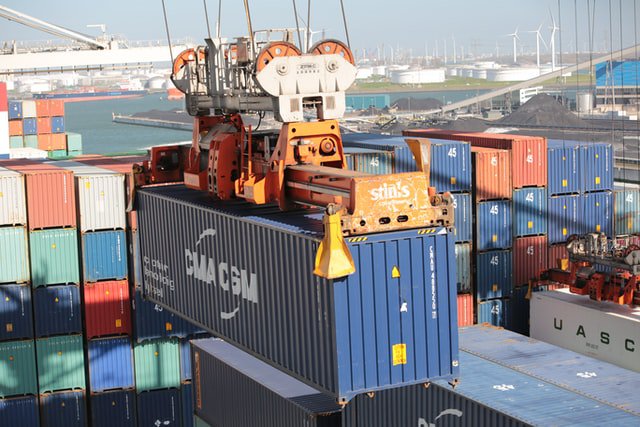
The market for ocean freight has reached a bottleneck in recent years, exacerbated by the many challenges presented through the COVID-19 pandemic. The combination of manufacturing closures overseas, explosive demand for e-commerce and imports, and excessive port delays upon re-opening has pushed container capacity to the absolute limit. Companies are scrambling to keep their supply chains moving while competing for any available container capacity - and many are looking into new solutions to keep freight moving and business from stalling.
What can shippers and carriers do to reduce the impact of these disruptions? Fortunately, capacity can still be found when it comes to moving cargo containers and other loads, even in tight markets. By strengthening existing connections and embracing modern innovations and tools, shipping capacity can be maintained at a somewhat stable level during these times of recovery and adjustment. Managing cargo shipping container transportation involves many steps and requires careful planning, especially during tight markets and capacity crunches. Let’s take a closer look at what’s happening and how your company can find cargo shipping capacity where it matters most.
Long-Term Consequences Within the Container Shipping Market
Several factors come into play regarding ocean freight transportation and management that make the market unpredictable, even at its best. Changes in consumer demands and buying habits, shifts in supply and inventory availability, carrier and shipper capacity issues, and ongoing economic pressures all impact the modern supply chain network. With this in mind, how can buyers make purchases with confidence, and how can shippers and carriers provide reliable and affordable services in such a volatile market? The key to successful cargo shipping container management is to build resilience and flexibility into the supply chain, starting with optimization.
It is vital that managers optimize the supply chain wherever and however possible. This critical step helps build resilience and adaptability by establishing a well-organized and informed supply chain network from end to end. Additionally, resiliency can help overcome the bottlenecks that arise in transpacific or transatlantic trade.
There are many factors at play driving change within the industry and limited container capacity, ranging from ongoing disruptions due to port closures and increased activity in US ports in anticipation of peak season. Consumer consumption is increasing beyond usual records, importers are experiencing added costs, and uncertainty remains a factor for vessels bound for the US face the threat for delays due to the worsening of restrictions and lockdowns in Asia. As the disruptions continue to become part of the narrative, importers are looking for ways to overcome these issues through stronger use of data and engagement with meaningful partners. This is where a digital freight marketplace for ocean containers can help.
Consider this; ocean freight marketplaces can help shippers find capacity faster. Faster capacity procurement amounts to better lead time planning and improvedinventory management. Meanwhile, forecasting helps keep long-term goals and processes front and center. Organizations must have real-time data and reporting metrics that allow them to plan and adapt to market changes or unforeseen delays. Container shipping is one of the most volatile and unpredictable of all transportation modes and, therefore, it requires the most significant amount of predictive planning. But the right solutions that connect ocean freight with containers and drayage upon arrival will go a long way toward reducing costs.
Regardless, it’s important to recognize the value of such solutions in overcoming disruption. Within the past 18 months, the supply chain has had to overcome disruption after disruption concerning cargo shipping containers, including:
- Inventory shortages and availability concerns
- Ongoing driver shortages
- Capacity crunches and shortages in drayage and OTR movements
- Changes in consumer buying habits and unpredictable spikes in demand
- Dock bottlenecks and delays loading/unloading
- Scheduling conflicts throughout the network
- Shipping delays and delivery issues
- Ever-rising prices and fees attached to shipments
The focus on long-term solutions and navigating a volatile market remains a primary concern for many shippers and carriers. Dealing with cargo containers and managing the intricate processes involved with container shipping have forced companies to rethink their strategies. Of course, it helps to have a few tips to know where to start.
What's Next: Tips to Overcome the Constraints
Dealing with supply chain disruptions and unprecedented capacity constraints has challenged supply chain managers and transportation teams to rethink typical strategies to procurement. Overcoming these pressures and limitations has required an entirely new approach to supply chain supervision and cargo shipping management.
Since container shipping and cargo management are a critical part of the global supply chain network, improving functionality, reliability, and affordability are more vital to ensuring ocean transports can continue supplying the global economy. A few essential steps logistics managers can take to overcome current constraints include:
Know the expected volume needs. While predicting market trends and consumer habits too far into the future can be difficult, predictive planning remains a critical component of successful supply chain management. By looking at past trends and consumer habits, combined with changing patterns in it’s easier to visualize the short- and long-term threats and opportunities to capacity.
Understand contract terms. Like every other mode of transportation, cargo shipping container transportation agreements are governed by contracts that outline critical details and responsibilities. Understanding the ICC Incoterm rules and how they can impact cargo movement is critical to getting what you pay for and limiting unexpected fees and surcharges.
Optimize and reoptimize the shipping network. Reworking the shipping network to compensate for disruptions and changing market trends is another vital step to overcoming constraints. Creating a flexible network that can pivot resources and utilize alternate trade lanes can save time and resources when shipping container capacity is limited.
Recognize that costs will likely increase. Expenses, overhead, and fees will always be a part of shipping. Management always wants to secure the best rate and services; but it’s essential to recognize that rates will increase across the board in tight markets and build in a margin of error to account for unexpected costs
Added Tip: Know How to Calculate Shipping Capacity and How Much Capacity You Need
Maximizing shipping capacity is vital to ocean freight transportation. However, it’s equally essential to understand capacity at its most basic level and calculate shipping capacity. To maximize cargo shipping container utilization, this means knowing how to calculate shipping capacity and needs.
While the size of ocean freight containers varies, two sizes are most common—twenty-foot equivalent units (TEUs) or forty-foot equivalent units (2-TEU). Using a CBM calculator can simplify determining the volume or capacity available with any given container, ensuring precise calculations of how much product can fit into a given cargo container.
For instance, a twenty-foot-long container might reach five feet wide and ten feet tall. The volume of that container equals 5 x 10 x 20, or a total of 1,000 cubic feet. This represents the max volume of capacity for that container.
Next, calculate the volume of the boxes and pallets in the shipment. Some freight may require a freestanding space — meaning it cannot be placed on top of or beneath any other item. This is a common need for high-quality, sensitive cargo. Other cargo, such as live animals, may require more space than pallets of office supplies. It all comes down to how much cargo can fit within the space.
So long as the cargo volume is less than the volume of the container, without exceeding weight limits along the way, ocean liners can maximize the use of available capacity. Whether shipments are made with a full container, less than container (LCL) loads, or consolidated LCL to form a single TEU or 2-TEU, the same process applies.
Another Added Tip: Know How to Pick the Right Container
Ocean freight is the most common mode of transportation utilized by exporters and importers for the global transportation of goods. Yes, airfreight handles a large volume for time-sensitive freight, but it doesn’t come close to the real size and scale of ocean. Many goods shipped internationally are moved at least partly via ocean transportation. This is due to ocean freight service being more cost-effective.
Consider this. Airfreight will almost always incur higher rates and fees. Alternatively, cargo shipping container transportation focuses on balancing expenses against capacity. As such, transportation managers must select the correct ocean container to meet the specific needs of the shipment. Choosing the right size container not only saves money, but it can also help ensure timely delivery too.
To help determine the container needed for any container shipping needs and ensure fast customs clearance, a few key questions need to be asked and answered.
- What goods require ocean or air transport?
- Are the items heavy, bulky, dry, liquid, or oversized?
- Does the cargo require refrigeration, insulation, ventilation?
- Will carriers need to follow any safety measures or use special handling steps, or unique equipment?
- Will the load require securing devices or special dunnage?Will the items, such as chemicals or hazardous materials, present a risk to other items also in the container?
- Does the shipment fit within the height, length, width, and weight limits for the container?
- Will shippers seek to include other outside items or specialty freight within a shared container?
Maximizing container shipping capacity in tight market crunches can present a massive challenge to supply chain managers. The right approach, backed with solid data and predictive planning, secures capacity and matches the right load with the most suitable container.
Leverage Digital Freight Marketplaces to Source Cargo Container Shipping Capacity Through All Markets
The best way to maintain a competitive advantage and optimize the supply chain through tight market periods rests with leveraging digital freight marketplaces. Maximizing use of cargo shipping containers is a critical part of maintaining capacity through times of market volatility. Every available container needs its full potential tapped, and effective planning and management can make this possible. Along with valuable market insight and collaborative data, ocean freight managers can make the process easier. Discover how container shipping capacity can be managed effectively to combat capacity crunches and network disruptions by contacting FreightMango today.





 Get instant quote
and compare offers in real time
Get instant quote
and compare offers in real time